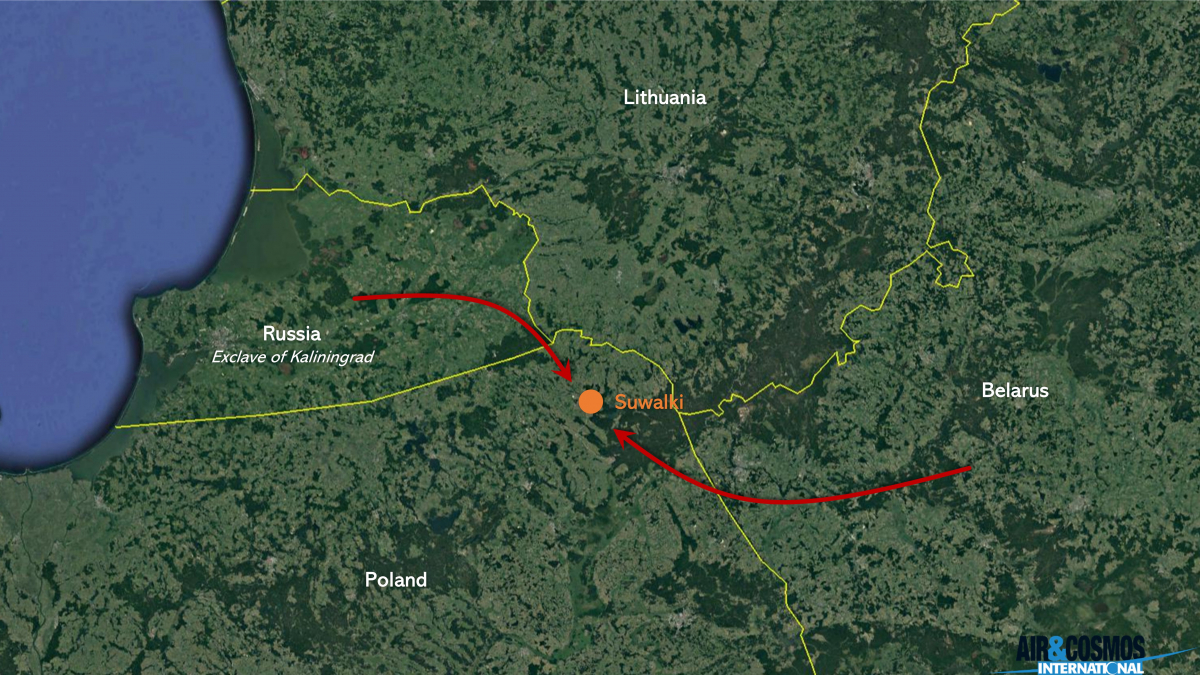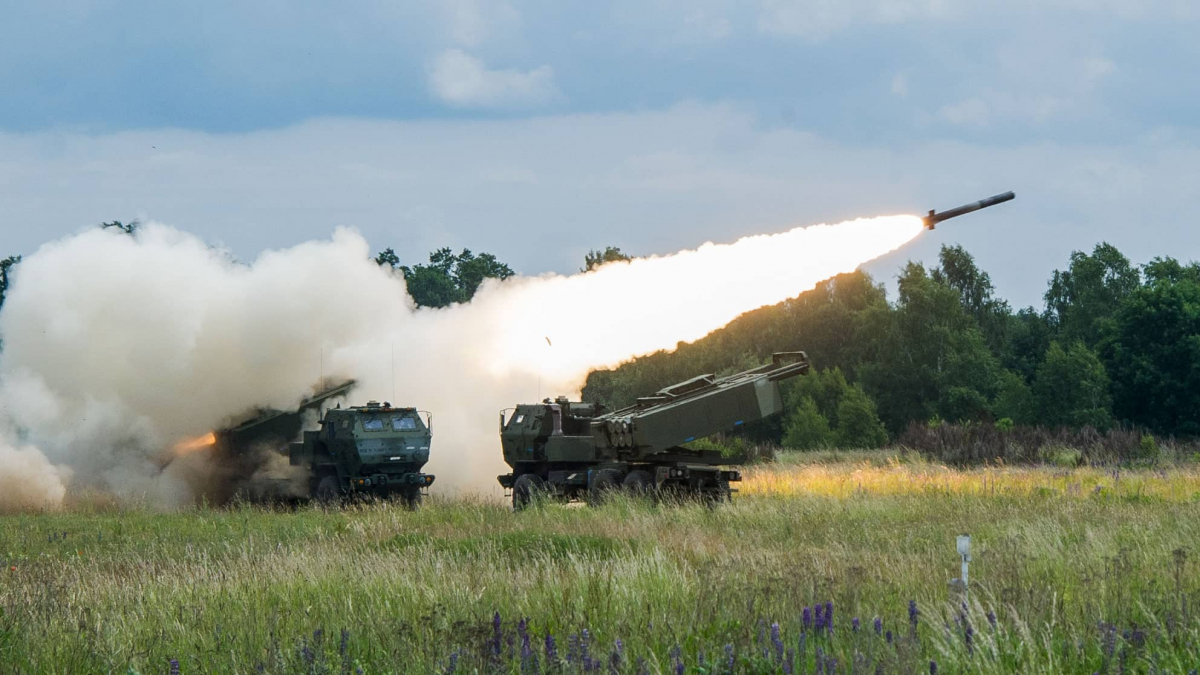This second part focuses on the increase in the capacity of equipment to support ground troops: 155 mm self-propelled howitzers, and HIMARS long-range rocket launchers, the purchase of AW149 medium transport helicopters or AH-64 Apache combat helicopters, for which the order was recently tripled!
Heavy artillery reinforcement
After the reinforcement of air capabilities or even heavy cavalry (see the first part of this article), Poland has also decided to reinforce its heavy artillery. In February 2019, it had already signed a contract to acquire 20 M142 HIMARS rocket launchers for $414 million. They are part of Poland's WR-300 HOMAR program, aimed at providing a deep strike capability for Polish artillery, with a range of 300 kilometers. In fact, the Poles will also have ATACMS missiles in addition to guided rockets. These systems (without the ATACMS) have already demonstrated their destructive capability in Ukraine, despite their low numbers.
On May 26, Mariusz Błaszczak, the Polish defense minister announced in a tweet (attached) that he had signed a letter of request (LOR) with the United States for the import of 500 HIMARS to equip 80 batteries. Discussions are still ongoing.
Aside from these HIMARS, the third part of the cooperation agreement with South Korea must also be taken into account. Indeed, after the 48 FA-50 attack aircraft and 1,000 K2/K2PL tanks, Poland also plans to purchase 600 K9 155mm self-propelled howitzers. Hanwha Defense signed the $2.4 billion contract on 26 August. Like the tanks, 212 K9A1s will be built in South Korea and delivered between 2024 and 2026 (press release). After that date, the rest of the K9PL order would then be produced directly under license in Poland. It has a shoot-and-scoot capability thanks to its automatic magazine: in just over 2 minutes, a K9 can have set up, fired 8 rounds for a minute, and set off again. It can also fire several shells with a different charge and elevation, allowing all the shells to arrive on the target at the same time (MRSI capability). These two capabilities allow for the avoidance of enemy counter-battery fire as well as the ability to conduct massive strikes with a small number of howitzers.
Finally, the cooperation between these two countries does not seem to end with this agreement as Poland is reportedly currently in discussions with South Korea to purchase K239 Chunmoo multiple rocket launchers. This is an all-terrain truck equipped with a launcher similar to the M270 MLRS. However, it would not have the capability to fire ATACMS.
In contrast, each of the two rocket baskets can carry:
- 20 130-mm rockets with a range of 36 km
- 6 230-mm rockets with a range of 80 km
- 6 239-mm guided rockets with a range of 160 km
If the Poles decide to buy these rocket launchers, they will likely be used to replace the smaller-range rocket launchers (BM-21s or even RM-70s) for counter-battery fire, leaving HIMARS to strike in the depth.
Not to mention air defense and rotary wings
The Narew anti-aircraft system is about to be delivered to Poland. This short-range anti-aircraft system is being developed by PGZ and MBDA to replace older anti-aircraft systems that also date back to the Soviet era and have become completely outdated. This article just happens to talk about a recent exercise including the various vehicles of a future Narew anti-aircraft battery.
Helicopters are also involved, as in early July a contract for the purchase of 32 AW-149 medium helicopters was signed (article on the subject). However, it was mainly another contract, which once again demonstrated the urgent need for Poland to step up. This is the replacement of the 30 Mi-24 Hind attack helicopters with 32 combat helicopters. The two helicopters in the running were the AH64E Apache or the AH-1Z Viper. In the end, the Apache, in its upgraded AH64Ev6 version, won the competition, but instead of the planned 32 helicopters, Poland tripled the order with a final 96 Apaches ordered (more info in this article)!
Impressive numbers
The battle tanks clearly show the rise of the Polish ground forces. Thus, keeping the Leopards already in service and eliminating Soviet-origin equipment, the Polish heavy cavalry will soon include:
- 180 K2
- 116 M1A1
- 250 M1A2 SEPv3
- 142 Leopard 2PL (2A4 version but recently modernized)
- 105 Leopard 2A5
- the 2019-2025 military programming law provides for a total of 200 Leclerc tanks, including 122 renovated to XLR standard, in service with the Army.
- The Germans, for their part, plan to have a total of 328 Leopard tanks of various variants by 2023.
Why a phoenix rising in Eastern Europe?
Poland is very attached to its independence and especially facing the East. Historically, since 1918, Poland has only been independent for 54 years. And even then, during the first years of independence, it had to deal with several invasions, including the Soviet invasion of 1919-1921. For the other 50 years, Poland was invaded by Nazi Germany and the Soviet Union without any allied country coming to its aid. By 1945, Poland was a field of ruin and one-fifth of its population had died, mostly in war crimes or crimes against humanity. The Soviets seized power and, as in 1939, the countries supporting Poland did not protest. It was not until December 31, 1989, that the Third Republic of Poland was proclaimed.
There is also a geographical context to add: in addition to having lived for many years under the sway of Moscow, Poland is located on the eastern border of the European Union but also of NATO. It shares 104 kilometers with Lithuania, and just south of this border is the highly strategic Suwałki corridor. In case of war, it is certain that Russian troops will try to occupy the area. It is the only land crossing point with the three Baltic states without having to pass through Russian territory. However, it is located right between the Russian exclave of Kaliningrad in the west and Belarus in the east. As demonstrated at the beginning of February, Belarus is a country that fully supports Russia, which could therefore move troops there. On the other hand, the Russian Armed Forces have many and varied assets in Kaliningrad, with long-range anti-aircraft systems, cruise missiles, tanks and other light armor. In fact, the need to counter the Russian armored mass in this plain is vital for Poland. Conversely, in order to support Lithuania, armored brigades from many countries are deployed there in rotations under NATO command.
Finally, most of the orders were made recently, and specifically after the outbreak of the Russian invasion of Ukraine. This is really the trigger for Poland. With its troubled history, the threat to the Suwałki Corridor and a threatening country to the east, Poland has therefore decided to raise its defense ambitions. This is to ensure that it has sufficient conventional deterrence force to avoid any risk of invasion from Russia. In addition, it should not also be forgotten that Poland has delivered some of its tanks to Ukraine, effectively decreasing its land combat capabilities, many of which still date from the Soviet era.
The Polish Parliament has already formalized in March 2022 (with only five abstentions and no votes against) the increase in the share of GDP allocated to the Polish Armed Forces. It is expected to increase from 2 to nearly 3%. It is even possible that in time it will reach 5%. The number of military personnel should also more than double, from 110,000 to 250,000 contracted soldiers (and 50,000 reservists). The French Armed Forces, by comparison, should soon reach 205,000 military personnel.


Découvrez cet article sur Air&Cosmos

